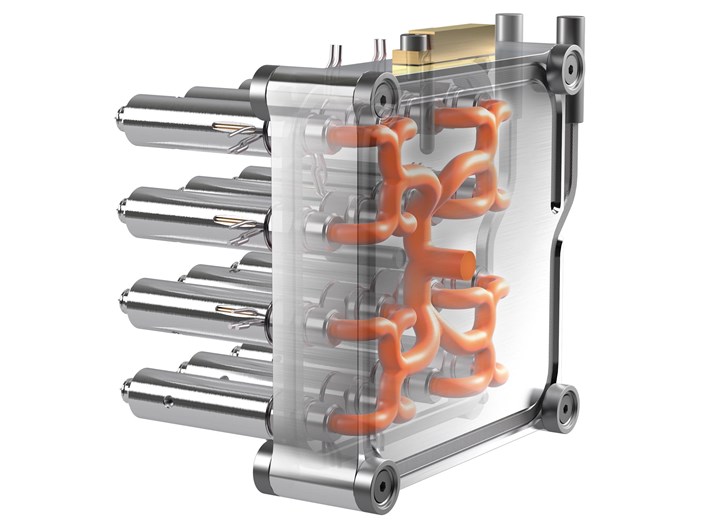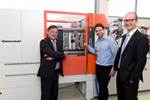3D-Printed Hot Runner Manifold
The additive manufactured Streamrunner hot runner system from Hasco eliminates sharp corners for improved melt flow.
Previewed at K 2019, and now called the Streamrunner, the new hot runner systems from Hasco feature a 3D-printed manifold, granting molders greater design freedom. In a release, the company noted that it began investigating additive manufacturing as a means to fabricate hot runner manifolds back in 2016. Since then, Hasco says it has undertaken numerous studies and tests. Hasco said the official market launch at K 2019 generated strong interest, and since the show, there has been “a number” of successful customer projects using the technology, which the company has now dubbed Streamrunner.
By using additive manufacturing to create the hot runner manifold, Hasco says it can offer maximum design freedom. Flow channels can be configured with the optimum rheological layout, avoiding sharp edges, corners and areas with poor flow. By creating a smooth route for the melt through the manifold, the melt experiences much lower shear stress. Flow-optimized design also speeds up color changes, since the melt can be divided and deflected over larger radii.
Hasco says the complete absence of diverting elements allows the Streamrunner to be produced with a compact design, with a height of 26 mm. Tight spacing down to 18 mm is possible for high-cavity systems, depending on the application. Hasco says it can configure specific solutions tailored to individual applications on the basis of simulation analyses.
A Hasco spokesperson declined to identify the precise material that is used to fabricate the manifold but did say that the mechanical properties of the printed material are at least equal to the company’s conventionally manufactured manifolds.
The machine that builds the Streamrunner manifolds currently has a maximum build size of 250 by 250 mm. By tilting the manifold, the Hasco spokesperson said slightly larger blocks could be built, but that can have downsides. In addition, a printing machine with a larger build area could be used but there is a “break even point”, and customers must weigh more smaller Streamrunners compared to one large unit. Post printing, the manifolds do require some finishing, given the rougher surface that results from printing a metal, but Hasco could not comment on how the manifolds are smoothed out.

Hasco’s Streamrunner hot runner systems feature a 3D-printed manifold.
Related Content
-
Additive Technologies for Injection Mold Tooling Ride Tailwinds
NPE2024: Lowering barriers to additive manufacturing adoption in toolmaking.
-
Smooth Operators: Vibration Compensation Improves Robot Performance
Ulendo is working to apply its vibration compensation algorithm to robots. This application is more complex than its initial market of fused filament fabrication 3D printers, but could result in faster, cheaper robots.
-
The Connector Conundrum: 3D Printed Mold Tooling’s Role in Innovation
ReelView Fishing faced an electronics obstacle in the development of its new technology for underwater video. Additive manufacturing for moldmaking allowed for the speed necessary to iterate to a solution. How inventors and invention will benefit from new ways of obtaining production-ready tooling.













